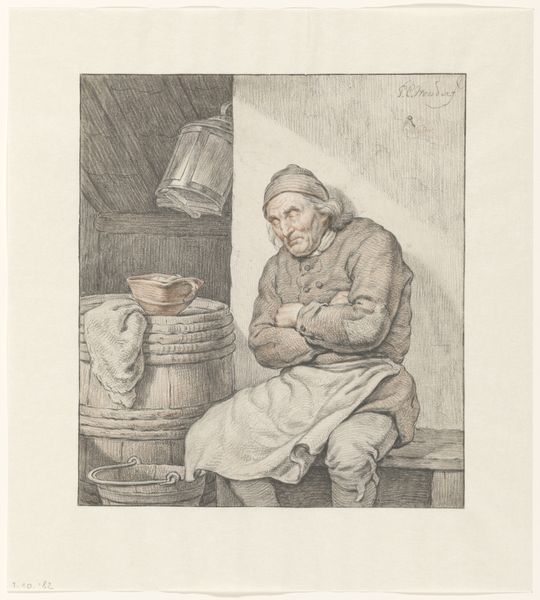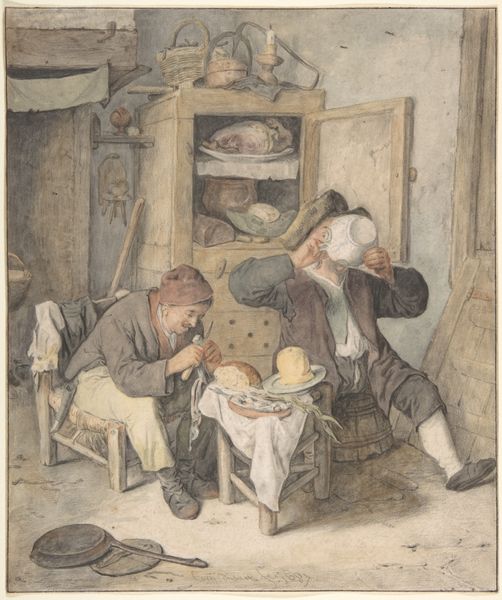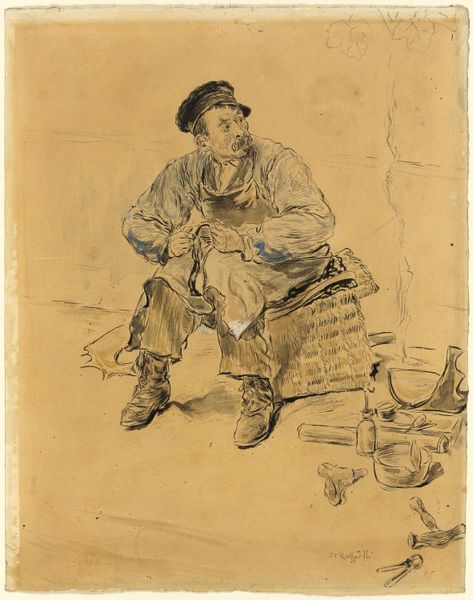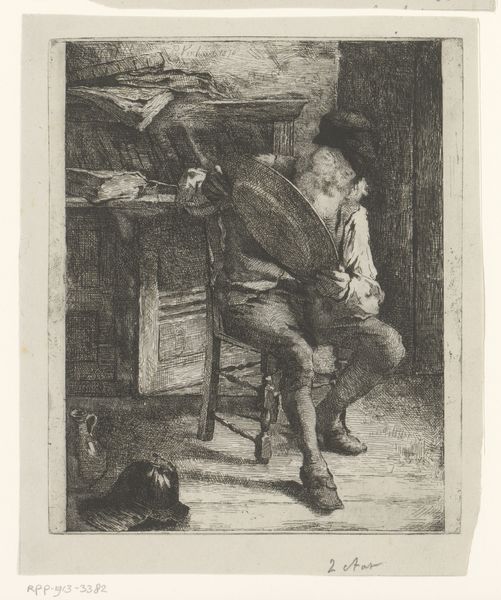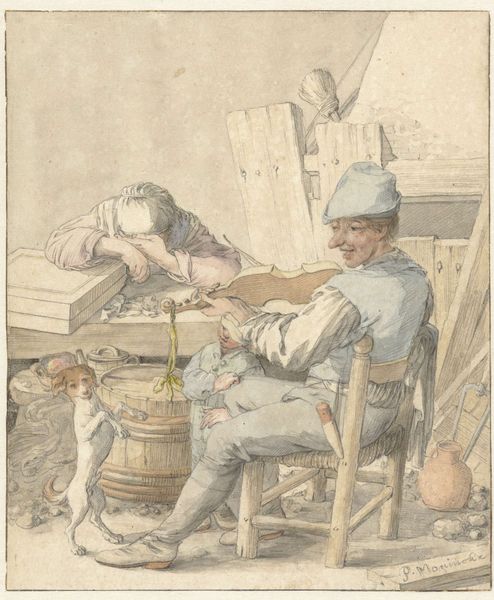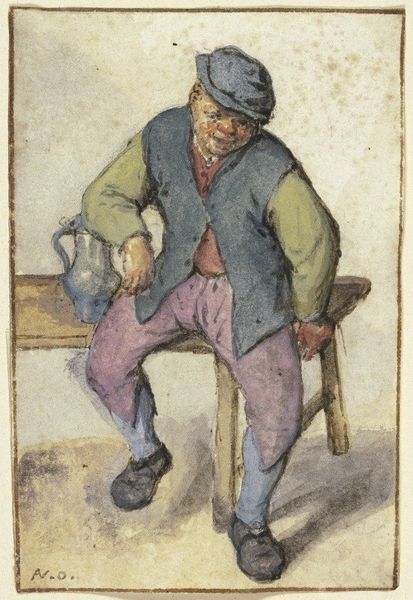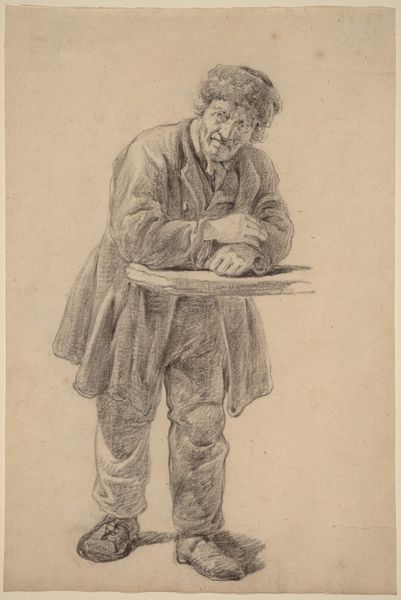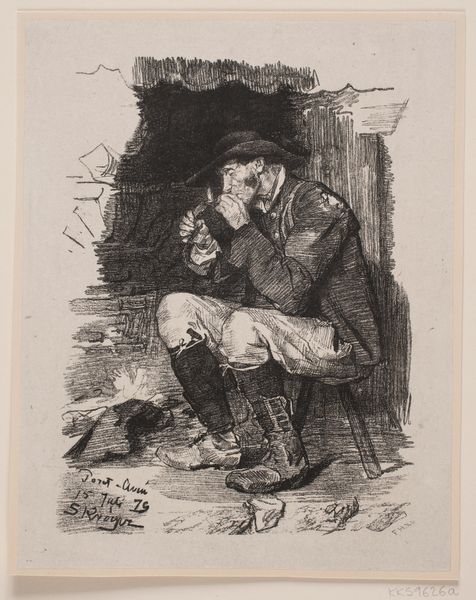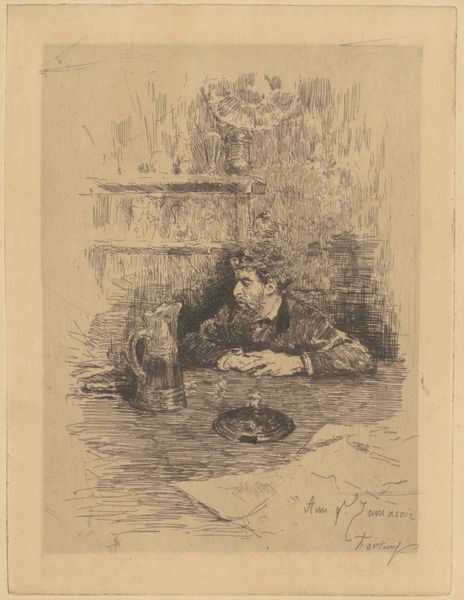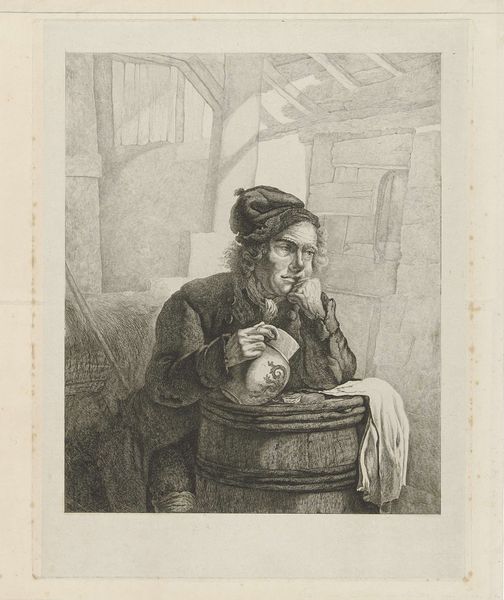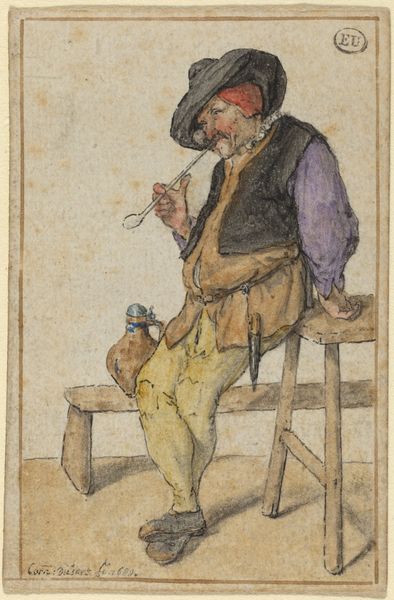
drawing, painting, paper, watercolor, chalk
#
portrait
#
drawing
#
netherlandish
#
toned paper
#
baroque
#
painting
#
paper
#
oil painting
#
watercolor
#
chalk
#
14_17th-century
#
genre-painting
#
watercolor
Copyright: Public Domain
Curator: This is Cornelis Dusart's "Zeitungsleser bei einem Fass," or "Newspaper Reader by a Barrel," dating from 1688. Editor: He looks utterly absorbed, doesn't he? The pose is so hunched and focused, the newspaper seems to glow in his hands like a holy text. There's such weariness etched in the detail of his aged facial features. Curator: Yes, and consider the materials; it's a beautiful drawing employing watercolor, chalk, and potentially oil paint on toned paper. The texture is just gorgeous, highlighting the textures of his clothing and the surrounding tavern. Editor: Speaking of, this brings up interesting social questions: who is reading, what are they reading, and where are they reading? The choice of depicting this man engaged in an intellectual act, rather than, say, laboring, says something about literacy and the dissemination of news in the 17th century. This artwork exists in the wider framework of public life during that era. Curator: Absolutely, but don’t disregard the materiality. He is not an aristocrat, consider the patched pants; he is positioned with a barrel and smoking pipe, clearly this is a location of labor, production and recreation. The paper becomes an object of accessibility because of location of recreation and work, the barrel which could indicate production makes this depiction fascinating. Editor: And notice how the artist positions us, the viewers, relative to the scene. We’re neither inside nor entirely outside, suggesting a kind of liminal space between private contemplation and public consumption. The artist is creating an open narrative. What did access to the newspaper signify for ordinary people at this historical juncture? It changed the social role and perception of public houses forever. Curator: I agree; there is great emphasis on ordinary, the process of his aging and the well used furniture is what stands out to me. I like to ponder on how that narrative connects us today to the everyday labors, social practices, and circulation of knowledge that structured people’s lives centuries ago. Editor: I concur, a beautiful and multifaceted slice of 17th-century social life.
Comments
No comments
Be the first to comment and join the conversation on the ultimate creative platform.

